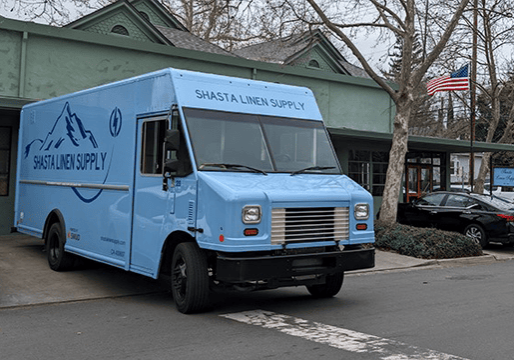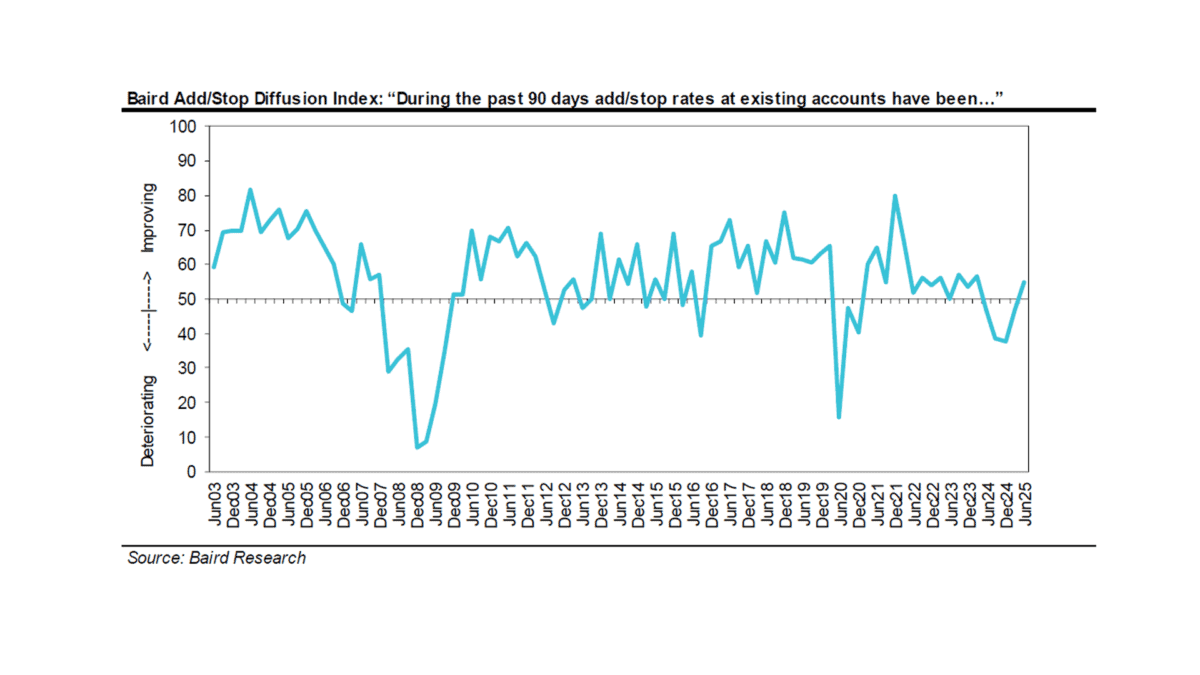As noted in Textile Services Weekly on March 11, Shasta Linen Supply Inc., Sacramento, CA, recently acquired five electric step vans worth roughly $1 million. This change moved Shasta Linen into compliance with California’s pending commercial-vehicle regulations. It also put the company in the vanguard of independents that have embraced alt-fuel route vehicles.
Noël Richardson, the fourth-generation president of Shasta Linen and a former TRSA chair, said she decided to make this move for both practical and personal reasons. “I’m glad we’ve done it,” she said, noting that the company has long championed environmentally friendly reusable textiles and energy- and water-saving technologies in its plant and on the route.
However, Richardson also wants to stay abreast of regulatory changes in the Golden State. “The impetus for me to jump on it was knowing that California is going to be requiring it in a few years,” she said. By 2031, California’s Advanced Clean Fleet (ACF) regulation will require all commercial fleets to have 50% of their vehicles all electric. In addition, to defray the costs of shifting to electric vehicles (EVs), Richardson tapped several incentive programs to acquire the five EV trucks manufactured by Motiv Power Systems, Foster City, CA. This funding helped offset the higher costs of EV trucks vs. gasoline or diesel-powered vehicles. Without this help, Shasta Linen probably wouldn’t have made the move at this time. “To be honest, I probably would not have gone ahead and bought electric vehicles, as they run about $200,000 apiece, and you can buy a regular step van for $80,000,” she said. “And that’s just for the truck. Then you’ve got another $20,000-$25,000 in a charging station for that truck. But because California is pushing this issue, there was a lot of funding. That’s what made me say, ‘I think I better get on board while there is funding available’ because when it goes away in California, we’ll continue to have the mandate.”
Funding aside, the transition to an EV fleet has gone smoothly, Richardson said. A key concern about EV trucks is the dearth of charging stations in California and across the U.S. With the aid of incentives from the state and a local utility company, Shasta Linen now has two charging stations at its plant that are used on a rotating basis to charge its trucks. Charging generally is done at night, and the Sacramento Municipal Utility District (SMUD) offers rebates for charging at off-peak hours, she said. In addition, Shasta Linen has rented a second parking lot where it’s installing three more charging stations. Those should come on line shortly. For now, Shasta Linen isn’t operating all five trucks at once. “I think in another month or so the other chargers will be complete for that piece,” she said. “But you don’t want to be running your battery so low that you’re stopping in the middle of the day, trying to look for a charging station.”
To ensure that route drivers have adequate power, Richardson confines the use of EV trucks to local routes within 60 miles of the plant. The company’s territory extends roughly 150 miles into outlying areas of the Central Valley, to the north and south of California’s capital city. “We go about two hours around Sacramento,” she said. “I wouldn’t use EV trucks to go up into the foothills. I think with the weight, it would be too far.” The same goes for southern routes that go roughly 50 miles to Stockton, CA. Cold weather isn’t considered an issue for EV trucks here due to the area’s year-round temperature range of 39°F-94°F.
As for training drivers on the EV trucks, Shasta Linen’s route drivers have made a smooth transition, Richardson said. “We’ve had no real hiccups at all,” she noted, adding that drivers are upbeat about the change. “I think they like driving them,” she said, adding that, “It’s not hard to train them. You just go out a little bit with them and they understand how to drive it.” One glitch occurred when a dashboard meter in a truck wasn’t properly connected, and the driver was unable to determine that the charge on the vehicle was too low. The truck ran out of electricity about three blocks from the plant and was towed. “That was an issue,” Richardson said. “But he learned his lesson and we haven’t had that happen since.”
Richardson said she hasn’t yet promoted the EV program to customers, but she plans to do so in the near term. The new trucks have redesigned logos with an electrical cord and a lighting symbol that lets people know they’re electric. Meanwhile, the SMUD and Motiv Power Systems are recognizing Shasta Linen in various promotional efforts.
On the performance front, Richardson said she’s happy with the EV trucks used on five of the company’s 10 routes. They’ve eliminated roughly 16,000-plus lbs. emissions, while saving Shasta Linen roughly $5,000 on gas, so far (gas costs nearly $6 a gallon in metro Sacramento). Additional savings is expected on maintenance, as there’s no conventional engine to service. The truck batteries have a five-year warranty, and to date they’ve performed flawlessly. “It’s really not been bad,” Richardson said of the EV experience. “I’ll be happy when we get the other chargers in. That’ll make it easier. But other than that, I think the drivers are happy, and we’ve definitely decreased our emissions. And we’re saving on gas. We haven’t had any battery issues or maintenance issues.”
Sign Up For Our Newsletter
Receive the latest updates on the linen, uniform and facility services industry from TRSA delivered straight to your inbox.








